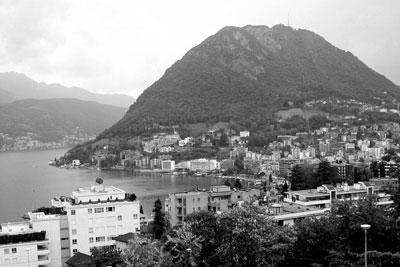Lugano’s Parco del Tassino
My wife, Paula, and I traveled on a shuttle bus from Milan’s Malpensa Airport in Italy to Lugano, Switzerland, in May ’08, and one of our fellow passengers was an engaging American college undergraduate returning from her home in Arizona to her school, Franklin College (www.fc.edu), an American college in Lugano. After she explained to us what an American college was doing in Lugano, we took advantage of our good fortune by picking her brain for sightseeing and restaurant tips.
Her best tip was a recommendation to visit Lugano’s Parco del Tassino, which was just up the hill behind our hotel, the Art Hotel Stella. Neither of our favorite guidebooks, Lonely Planet or Rick Steves, mentioned this park or even showed it on their Lugano maps; however, later that day my wife found an informative brochure about the park in Lugano’s tourism office near the ferry docks.
The park itself isn’t too much of a destination, but it offers sweeping, panoramic views of Lugano, the nearby towns and mountains and Lake Lugano.
The usual sites for taking photos of this area are Monte San Salvatore or Monte Brè, both accessible by funicular. During our visit, the summits of both mountains were almost always shrouded in cloud, while the park provided the best photo opportunities in addition to being the quickest and cheapest (free) option.
Within the park there are several picnic areas with scenic views. Growing on the park’s slopes and terraces are a number of magnolias, dogwoods, chestnut trees and other trees along with roses, wisteria and other attractive plantings.
Parco del Tassino is located uphill from and southwest of Lugano’s train station. The simple route to a park entrance is reached by crossing Via Basilea and turning left after you exit the train station on its uphill (west) side. A 2-minute walk will take you to the park’s lower-elevation entrance. From there you’ll have to ascend to the top of the park to enjoy the views.
The less direct, but recommended, approach is to take Via Sorengo when exiting the train station (again going uphill) to Via Borromini, turn left and continue uphill to Via Stabite, then bear slightly to the right at the intersection with Via Montarina. (This isn’t as complicated as it sounds, especially if you have a map.) The park’s higher-elevation entrance, along with its great views, will soon be on your left.
STEPHEN O. ADDISON, Jr.
Charlotte, NC

